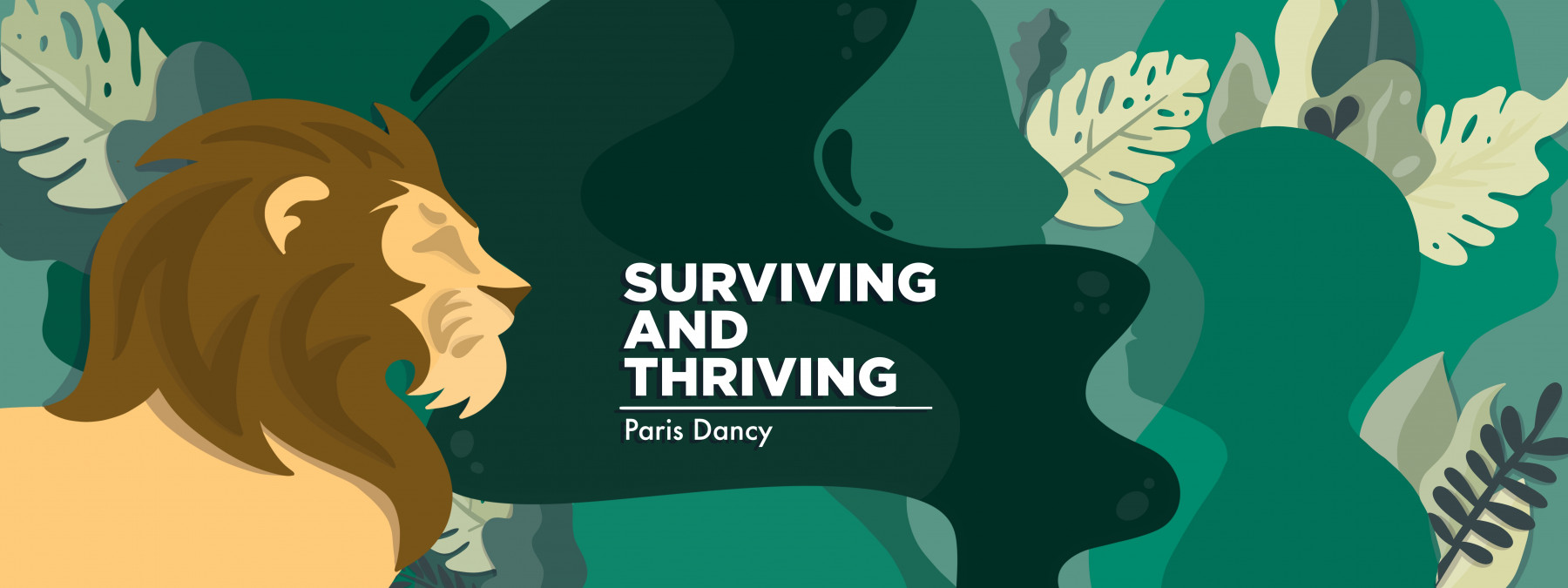My Experience Treating Low Testosterone With Cannabis

The potential benefits and risks of cannabis have long been a topic of discussion. There are various stigmas attached to the plant because people have different opinions about it. Is cannabis a drug? Can it be used as an alternative to Western medicine? Is it dangerous? The answers are frequently debated.
In this column, I will focus on my experience treating low testosterone with cannabis as someone who had a pituitary adenoma and battled Cushing’s disease. As a disclaimer, it is not my intention to provide medical advice or recommend cannabis as a treatment. Speak with your doctor and other members of your care team before making any type of medical decision.
Why I sought alternative treatment
I was diagnosed with hypogonadism, or low testosterone, in 2015. I was prescribed a topical steroid, but had to stop using it due to an allergic reaction. Doctors soon discovered my pituitary adenoma, which we realized was causing my low testosterone. I had transsphenoidal surgery to remove the tumor later that year.
During some testing in 2017, my endocrinologist noticed my testosterone levels were still low. I started on testosterone replacement therapy (TRT), which required biweekly injections. Although I saw an improvement in my energy levels, focus, strength, and libido, my attitude and aggression were becoming problematic and concerning my loved ones.
After discussing it with my wife, I stopped TRT in 2018 and decided to search for an alternative solution. I had done some research on cannabis and other natural supplements, and presented the idea to my wife.
She was initially hesitant, and rightfully so. I had used marijuana in the past recreationally, but also as a means of self-medicating while struggling with depression and anxiety before my surgery. I didn’t see this as a problem. I thought, “It’s just marijuana. I know how it affects me.”
I was wrong.
What I didn’t consider
I didn’t consider several factors when deciding to treat my lingering health issues with medical cannabis.
Firstly, my body had changed following my battle with Cushing’s and my surgery. Weight didn’t come off as fast as it used to, and I had constant aches in my limbs, feet, and neck. I could no longer use a substance or medication without facing consequences. I had noticed this while taking the prescribed topical steroids and TRT.
Secondly, I didn’t fully consider how self-medicating had affected me. During that time, I saw a decline in my productivity, both personally and professionally. And as I discussed in a previous column, self-medicating didn’t allow me to address the root of the issue. It only made things in my life more difficult.
Thirdly, I lacked knowledge about the many types and strains of cannabis, which prevented me from making an informed decision about what type of product I should use.
THC vs. CBD
In selecting cannabis products, one thing consumers must consider is the amount of THC and CBD in them. These are natural active compounds (cannabinoids) found in the cannabis plant.
THC, or tetrahydrocannabinol, is the psychoactive compound in cannabis that produces a “high” or euphoric feeling. The higher the percentage of THC in a cannabis strain, the stronger the effect.
CBD, or cannabidiol, can be derived from either hemp or marijuana, which are both types of cannabis. In the U.S., hemp is legal and defined as a cannabis plant that contains 0.3% THC or less. Marijuana contains more than 0.3% THC and is federally illegal, although many states have legalized it, either fully or for medicinal purposes.
CBD does not produce the same “high” as THC, but both cannabinoids may offer medical benefits, such as pain, anxiety, and stress relief.
If you are considering trying medical cannabis, I encourage you to check your state’s laws and speak with your physician.
Why I ultimately chose CBD
After much trial and error, I discovered that the higher the percentage of THC, the more issues I was having. The pain and stiffness in my feet and lower back seemed to worsen. It didn’t matter which strain I used or how I consumed it.
Then, I decided to start trying CBD products with low levels of THC. I also began a new health regimen involving a plant-based diet, intermittent fasting, and exercise. I started taking supplements that research suggests can naturally boost testosterone levels and regulate hormones.
Within a month, I noticed my energy levels increasing, my mood improving, and my stiffness decreasing. Although I was still the same weight, I felt lighter and stronger, and my walks were getting longer. Soon, the aches went away completely.
To this day, I am still curious about the effects of THC on people who have had pituitary adenomas or Cushing’s disease. Given my own experience, I wonder if there is a correlation between THC and worsening symptoms.
While I believe it’s been helpful, I don’t think CBD alone led to the improvements in my health. I believe that the combination of healthier lifestyle choices and CBD has given me the results I desire.
***
Note: Cushing’s Disease News is strictly a news and information website about the disease. It does not provide medical advice, diagnosis, or treatment. This content is not intended to be a substitute for professional medical advice, diagnosis, or treatment. Always seek the advice of your physician or other qualified health provider with any questions you may have regarding a medical condition. Never disregard professional medical advice or delay in seeking it because of something you have read on this website. The opinions expressed in this column are not those of Cushing’s Disease News or its parent company, BioNews, and are intended to spark discussion about issues pertaining to Cushing’s.








Comments
Alan
Testosterone therapy (https://hrtmedical.net/) is provided to men with officially diagnosed hypogonadism (or low T). You get improved muscle strength, better sex drive, better shape, and more energy.